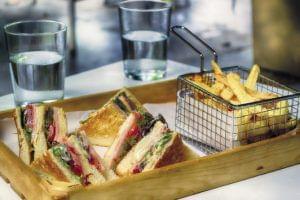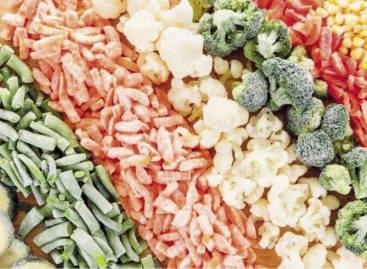Magazine: Habits from the past, values from the future
Eating is a symbolic activity of consumer society, so it isn’t surprising at all that it already has its own direction in modern sociology (sociology of food). Researchers can point out patterns in the production and consumption of food, which can help us understand how modern society is structured. It also tells a lot about people where they buy their food or how the food purchased exits the consumption cycle. When we think about food and the future, the following things come to mind: smaller resources than we have now, increased demand from the globally growing middle class, and the sustainability problems caused by this trend. With these in mind, perhaps it is a good idea to examine what we eat and how we eat a bit more closely.

It is needless to say that the consumption of food forms an integral part of human culture. For centuries eating habits were shaped by the upper layers of society (trickle down theory), but the 20th century brought a change in this, e.g. it is enough to mention pizza, which originally used to be the food of the lower middle classes. As Elemér Hankiss put it so wisely, the 20th century was the period when consumption underwent a democratisation process.

Ákos Kozák PhD
sociologist future research
GfK Hungária
About 100 years ago canned food appeared on the shelves of stores in the USA. This modernised cooking and changed eating habits. In the 1960 families in Western Europe faced the first wave of DIY foods, plus this was also the time when fast food chains entered the market. The middle class that had become stronger in the 1960s started eating out more in the 1970s, many people even travelled abroad to eat something different. This gave an impetus to the gastronomy segment, and at the same time more and more people immigrated to the western countries, thanks to which ethnic foods entered the scene, too.
Convenience foods have also started their conquest, and this came together with the necessary kitchen technology, e.g. microwave oven. In 1973 Henri Gault and Christian Millau laid down the principles of Nouvelle Cuisine, which still define the work of chefs today. In the 1980s the concept of organic foods was born in the USA. Fusion cuisine was another revolutionary step forward, and this didn’t simply mean kitchen technology – it was the perfect manifestation of the more and more globalising world. In the 1990s Hungary got a bit closer to international gastronomy than it had been in the decades before. Europe was already familiarising itself with vegetarianism, and with the growing demand for light, low-fat and low-calorie products.
From the 2000s health trends became important in eating habits. The scientific world has been busy studying functional foods. Later the concept of artisan foods and drinks entered the stage and in the 2010s the aspects of being local and sustainable took foods and eating in a new direction. Flexitarians are a new group of consumers: basically they follow a plant-based diet, but from time to time they like to eat high-quality meat dishes. Today we are already talking about in-vitro meat and the beyond-food concept – but these already lead us into the next decade! //
Related news
(HU) Kautzky Szemők Adrienn: Vigyázzunk a sarlatánokkal
🎧 Hallgasd a cikket: Lejátszás Szünet Folytatás Leállítás Nyelv: Auto…
Read more >After temporary stabilization, the outlook for the domestic food industry is uncertain again
🎧 Hallgasd a cikket: Lejátszás Szünet Folytatás Leállítás Nyelv: Auto…
Read more >Broccoli is already in your head, but it’s a long way to the plate
🎧 Hallgasd a cikket: Lejátszás Szünet Folytatás Leállítás Nyelv: Auto…
Read more >Related news
(HU) A nap mondása
🎧 Hallgasd a cikket: Lejátszás Szünet Folytatás Leállítás Nyelv: Auto…
Read more >(HU) Kautzky Szemők Adrienn: Vigyázzunk a sarlatánokkal
🎧 Hallgasd a cikket: Lejátszás Szünet Folytatás Leállítás Nyelv: Auto…
Read more >The Hortobágy fish farm delivers one hundred tons of fish to stores every day
🎧 Hallgasd a cikket: Lejátszás Szünet Folytatás Leállítás Nyelv: Auto…
Read more >





